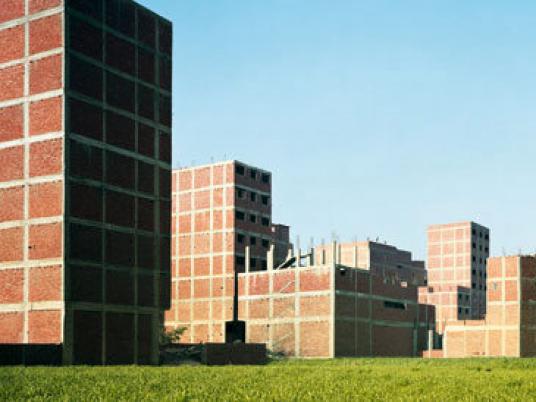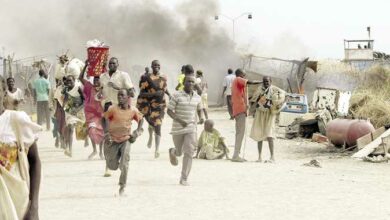
On a day designated for ideas and discussions about towns and cities, urban planners discussed ways of improving Cairo at a conference Monday.
“We are at a critical time in Egypt’s development where the only way out is to compromise and find a way for all parties involved — academics, policymakers, institutions — to work in harmony and cooperation,” Housing Minister Tareq Wafiq said during the United Nations World Habitat Day conference.
World Habitat Day, held annually on the first Monday of October, is a day devoted to reflecting on the state of towns and cities. This year’s theme is “Changing Cities & Building Opportunities.”
To commemorate the day, UN-HABITAT, the UN urban development agency, released a report on the state of the world’s cities and people’s notions about prosperity.
According to the report, major cities function as national engines, and for the engine to function properly, five indices must be maintained, depicted as spokes on a wheel.
These indices are: productivity, infrastructure, quality of life, equity and social inclusion, and environmental sustainability. Strong policies and inter-institutional communication hold these five key points together.
In the report, Cairo is listed as one of Africa’s most promising cities. With regards to the prosperity wheel, the current political turmoil highlights the need for more integrated pathway and more balanced growth in terms of quality of life and infrastructure, as well as the need to pay special attention to and develop a system to equity and social inclusion.
“In Egypt, different stakeholders have previously found much difficulty working together efficiently, and this needs to be the focus for Cairo over the next year,” Wafiq said.
The report states that proper infrastructure and policy are at the heart of ensuring the development of a prosperous city, something Wafiq stressed the Cabinet is now working hard toward. However, the report also says that developing countries need to redefine their notions about what urban prosperity actually entails as well as the way citizens view and relate to their respective cities.
“It’s not all in the hands of policymakers. Populations must also be encouraged to lead by example,” said Sherif Gohary, a speaker at the conference. “Integrated growth means everybody takes an active role.”
In accord with this view, the report portrays the city as a human organism rather than a labyrinth to work around, and explains that experts and policymakers, who overemphasize the importance of improving the GDP, lose sight of the intangible human aspects of the city that are often more important in ensuring long-term, sustainable development.
The report also offers advice for developing cities, noting various traps and hindrances to be looked out for and avoided.
One of the most common hindrances for developing countries is defining the boundaries between urban and rural land and people, ensuring proper division of resources respectively, and ensuring effective communication and connectivity between the two domains.
One symptom of refusing to clearly define these boundaries results in disconnected communities taking matters into their own hands by building informal settlements. According to the World Bank, at least 40 percent of Egyptians live in informal settlements, despite economic growth.
“In recent years, Egypt’s GDP growth rate has been soaring,” Gohary said. “Yet most Egyptians live in informal communities and slums. A city is only as wealthy as its poorest and most unfortunate demographic, especially if it’s the biggest one.”
The report states that developing countries cannot consider themselves to be growing prosperously unless the growth is inclusive. Gohary thinks merging Egypt’s informal and formal communities is one of the country’s biggest challenges.
In terms of urban planning, the conference highlighted a list of priorities for improving the capital’s current state. Aside from developing proper infrastructure and policies, improving the public transport system was at the top of the list.
Speakers explained that Egypt is losing billions of pounds in time lost commuting around the city.
“If connectivity [is] like a city’s veins, then Egypt is having a stroke,” said Yehia Abdel Maged, urban planner at the Egyptian Housing Building Research Center. Speakers stressed that public transport and alternative transport incentives must be developed immediately to get superfluous cars off of the streets.
The report also highlights three danger zones for developing cities: financial crises, democratic crises and environmental crises. It stresses that while a country seeks to grow, it must ensure the protection of the environment in order to prevent unforeseen catastrophic events. It says that prospering at the cost of the environment is short-term and will damage the city’s health.
Nonetheless, the final and most arguably most important point made in the report stresses the commonly reiterated platitude that challenges actually present opportunities for growth.
While this idea is often overstated, the report explains that overpopulation must be seen as available manpower and workforce, a suffering environment or poor public transport must be seen as an opportunity to create institutions and jobs for people. Simultaneously, treating challenges as such results in a more prosperous city.
It explains that attacking these national challenges give people an opportunity to bring meaning to their lives, improving quality of life and greatly fueling the development of the city as a whole.




